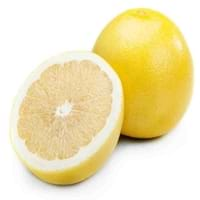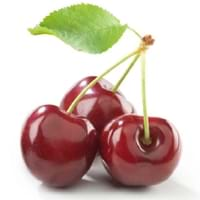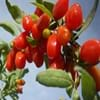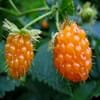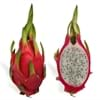Health Benefits
Arthritis prevention, Asthma treatment, Cancer prevention, Kidney stone treatment, Liver health
Arthritis prevention, Cancer prevention, Gout treatment, Heart care, Muscle pain relief, Regulation of heart rate, Treatment of alzheimer's disease
General Benefits
Anti oxidant properties, Boosts immune system, Cures cough, Eye care, Fights against infections, Helps in weight loss, Improves eye vision, Maintains healthy cholesterol level, Treatment of common cold
Anti oxidant properties, Anti-inflammatory properties, Controls blood pressure, Cures headache, Sore throat treatment
Skin Benefits
Anti-aging benefits, Brightens and lightens complexion, Reduces wrinkles, Treatment of dark spots
Anti-aging benefits, Brightens and lightens complexion, Skin rejuvenation, Treatment of dark spots
Hair Benefits
Prevents hair loss, Protects hair, Regulates hair growth, Treatment of dandruff
Acts as moisturizer, Protects hair, Regulates hair growth, Rejuvenates scalp
Allergy Symptoms
Abdominal pains, Breathing difficulty, Decrease in blood pressure, Diarrhea, Dizziness, Eczema, Hives, Lightheadedness, Nausea, Runny nose, Sneezing, Swelling of mouth, tongue or lips, Vomiting, Wheezing
Anaphylaxis, Breathing difficulty, Fainting, Hives, Itching, Nasal congestion, Nausea, Swelling of mouth, tongue or lips, Tingling sensation in mouth, Vomiting, Wheezing
Side Effects
Allergic reaction
Abdominal cramps, Allergic reaction, Bloating, Intestinal gas
Best Time to Eat
As a snack in the late afternoon, Eat the fresh ones, avoid mixing with any other foods, don't eat after meal., Morning time (before lunch), Strictly avoid empty stomach
Best if taken as a breakfast (or empty stomach), As a snack in the late afternoon, Don't eat after meal, Morning time (before lunch)
Vitamin B5 (Pantothenic Acid)
Vitamin C (Ascorbic Acid)
Vitamin K (Phyllochinone)
Phytosterol
Not Available
Calories in Fresh Fruit with Peel
Not Available
Calories in Fresh Fruit without Peel
Not Available
Calories in Frozen Form
Not Available
Type
Citrus, Tree fruit
Tree fruit
Season
All seasons
Summer
Varieties
Duncan, Marsh and Oro Blanco
Vandalay, Stella, Tehranivee, Sonata, Whitegold, Symphony, Blackgold, Sunburst, Lapins, Skeena and Sweetheart
Inside Color
Creamy Yellow
Red
Texture
Succulent
Crunchy
Origin
Barbados
Europe, Western Asia
Soil Type
Loam, Well-drained
Sandy
Climatic Conditions
Humid, Warm
Cold
Facts about
- February is known as National Grapefruit Month.
- It is called as state fruit of texas.
- No mechanical devices are used while picking grapefruits, they are always handpicked.
- The word cherry is derived from the Turkish town of Cerasus.
- In Oliver, British Columbia, a pie of 39,683 pounds was baked which holds the record of biggest cherry pie.
- National cherry cheese cake day is on April 23.
Top Producer
China
Turkey
Other Countries
Argentina, India, Israel, Mexico, South Africa, Sudan, Thailand, Turkey, United States of America
Austria, Chile, China, France, Germany, Greece, Iran, Italy, Poland, Romania, Russia, Serbia, Spain, Syria, Ukraine, United States of America, Uzbekistan
Top Importer
Europe
Russia
Top Exporter
United States of America
Poland
Botanical Name
Citrus paradisi
Prunus avium
Synonym
Not Available
Not Available
Subkingdom
Tracheobionta
Tracheobionta
Division
Magnoliophyta
Magnoliophyta
Class
Magnoliopsida
Magnoliopsida
Species
C. × paradisi
P. avium
Generic Group
Citrus fruit
Rose
Compare White Grapefruit and Sweet Cherry
It is important compare White Grapefruit and Sweet Cherry as both the fruits have a different nutritional value. Their comparison can be done on the basis of their vitamin and mineral content, calories, benefits as well as characteristics, making it easier for us to choose the best fruit for our diet. Their general health benefits are as follows:
White Grapefruit Benefits: anti oxidant properties, boosts immune system, cures cough, eye care, fights against infections, helps in weight loss, improves eye vision, maintains healthy cholesterol level and treatment of common cold.
Sweet Cherry Benefits: anti oxidant properties, anti-inflammatory properties, controls blood pressure, cures headache and sore throat treatment.
Fruits are also used as a remedy for various hair problems. The hair benefits of White Grapefruit are: prevents hair loss, protects hair, regulates hair growth and treatment of dandruff and hair benefits of Sweet Cherry are: acts as moisturizer, protects hair, regulates hair growth and rejuvenates scalp. Some fruits are known to cause allergic reactions. The allergy symptoms of first fruit are: abdominal pains, breathing difficulty, decrease in blood pressure, diarrhea, dizziness, eczema, hives, lightheadedness, nausea, runny nose, sneezing, swelling of mouth, tongue or lips, vomiting and wheezing and the symptoms of second fruit are: anaphylaxis, breathing difficulty, fainting, hives, itching, nasal congestion, nausea, swelling of mouth, tongue or lips, tingling sensation in mouth, vomiting and wheezing. Get sorted White Grapefruit vs Sweet Cherry comparison with the help of fruit comparison tool by fruitvs.com.
